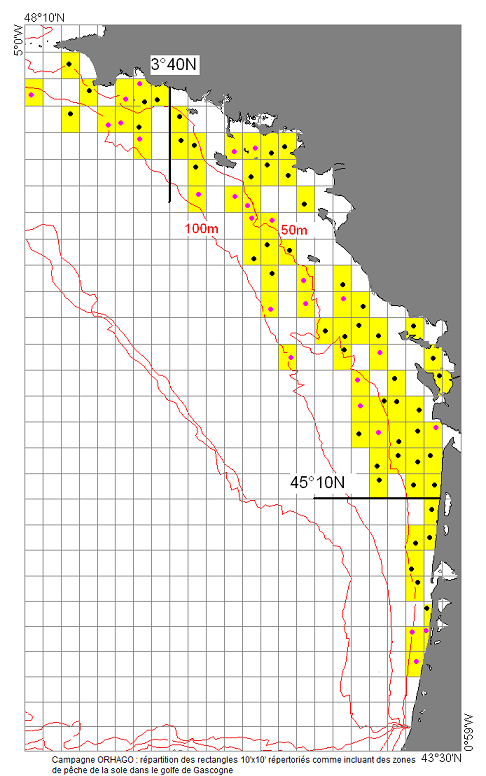Benthos
Type of resources
Available actions
Topics
Keywords
Contact for the resource
Provided by
Years
Formats
Representation types
Update frequencies
status
Scale
Resolution
-
The use of an ecological niche model has made it possible to characterize, on the one hand, the effects of climate change on the native species of the Bay of Biscay, such as displacements of favorable habitats towards higher latitudes, or, in a to a lesser extent, a decrease in the area of favorable habitat for native species. On the other hand, the potential displacement of the favorable habitat of some subtropical species (currently present along the Moroccan coast) in the Bay of Biscay could be expected. They would then become non-indigenous species (NIS)
-
The portal presents the objectives of the APPEAL project for large communication
-

The ORHAGO cruises (Observation of the benthic aquatic resources of the GOlfe de Gascogne) are part of Ifremer's mission of observation and expertise in support of fisheries management. Their main aim is to obtain series of abundance indices for flatfish and in particular for sole. Consequently, the choice was made to adopt a beam trawl to comply with the standards of the International Council for the Exploration of the Sea (ICES) for flatfish. This choice has made it possible to be part of the campaigns coordinated by ICES and thus to be a member of a community in which the methodology and results can be discussed each year in the ICES WGBEAM working groups. Since 2013, the ORHAGO campaigns have been used to assess the state of the Bay of Biscay sole stock. They allow this assessment to be carried out analytically, i.e. using a model to analyse and simulate the dynamics of the stock. The ORHAGO campaigns are also a source of information on the evolution of benthic populations and coastal benthic habitats in the Bay of Biscay.
-
This work seeks to understand to what extent the future wind farms that will be established in the Channel and the Atlantic can complement the existing network of MPAs in terms of surface gain on the one hand and coverage of the three facets of biodiversity (taxonomic, functional, phylogenetic) on the other hand. In a second step, a draft optimization of the network of wind farms in the Bay of Biscay and in the English Channel was carried out in order to identify the locations optimizing the conservation of taxonomic diversity
-
A vidéo titled "Food Webs and the socio-ecosystem approach: towards a better understanding of environmental intégration of offshore renewable energies"
-
A spatialized EwE model was built covering the continental shelf of the Bay of Biscay. From this base, six ECOPATH models were built: a current model serving as a reference, a model only including the effect of climate change on native species, and four models also simulating the arrival of NIS under different hypotheses of biomass. These models include 44 native trophic groups ranging from primary production to top predators, including 13 monospecific groups of commercial interest, and two non-living groups. In addition, 8 non-indigenous trophic groups and 11 fishing fleets have been integrated in order to model the main professions operating today in the Bay of Biscay
-
The use of an ecological niche model has made it possible to characterize on the one hand the effects of climate change on the native species of the Gulf of Lio, such as displacements of favorable habitats or the reduction of the surface of the habitat. favor of native species. On the other hand, the potential displacement of the favorable habitat of some subtropical species in the Gulf of Lion could be expected. They would then become non-indigenous species (NIS)
-
This deliverable consists of two parts, first a legal guide to environmental assessment for floating wind farm projects, then in a second part, a study on the legal framework for the spatial planning of floating wind farms: The place of environmental assessment
-
This deliverable refers to the socio-ecosystem model that has been developed
-
Videos of the final restitution meeting of the results of the APPEAL project which took place face-to-face in Lorient on March 8, 2022
 Catalogue PIGMA
Catalogue PIGMA